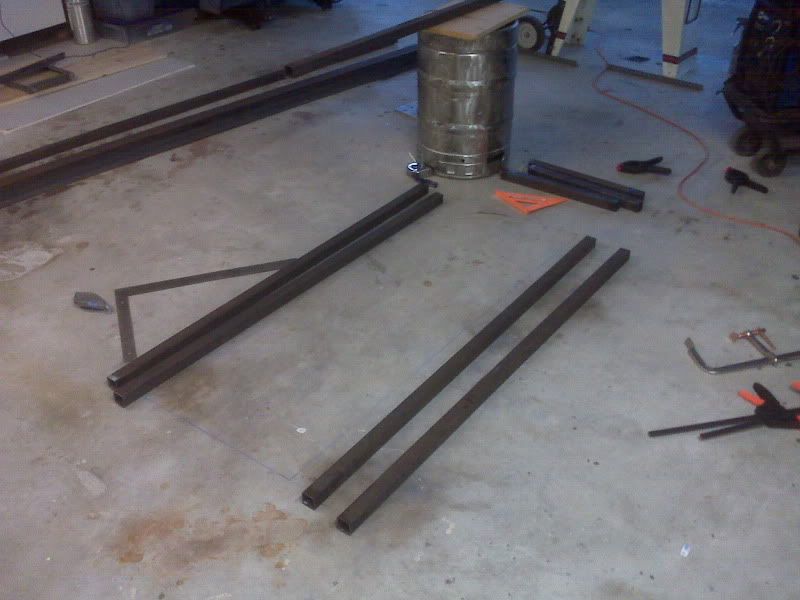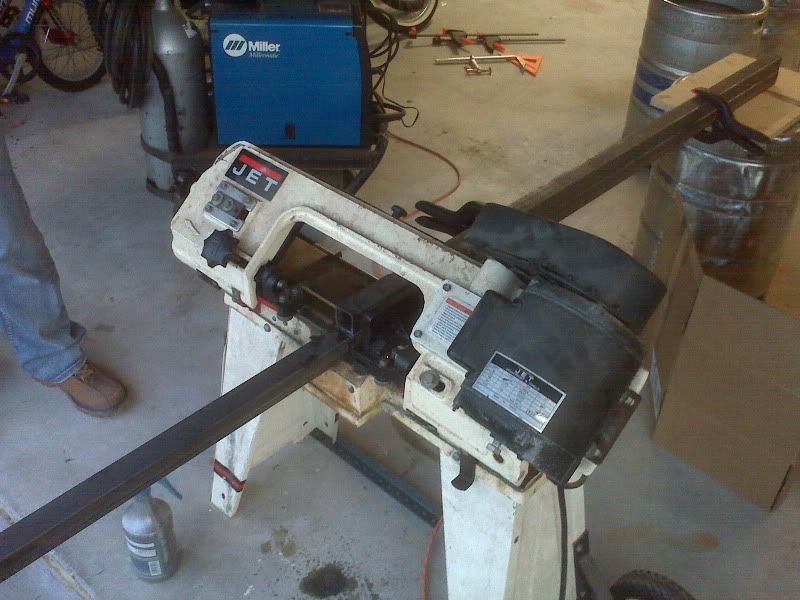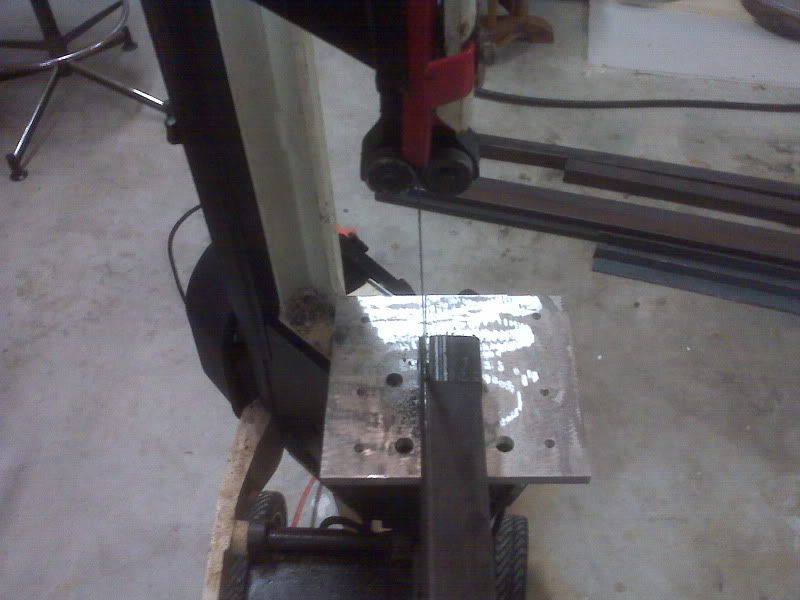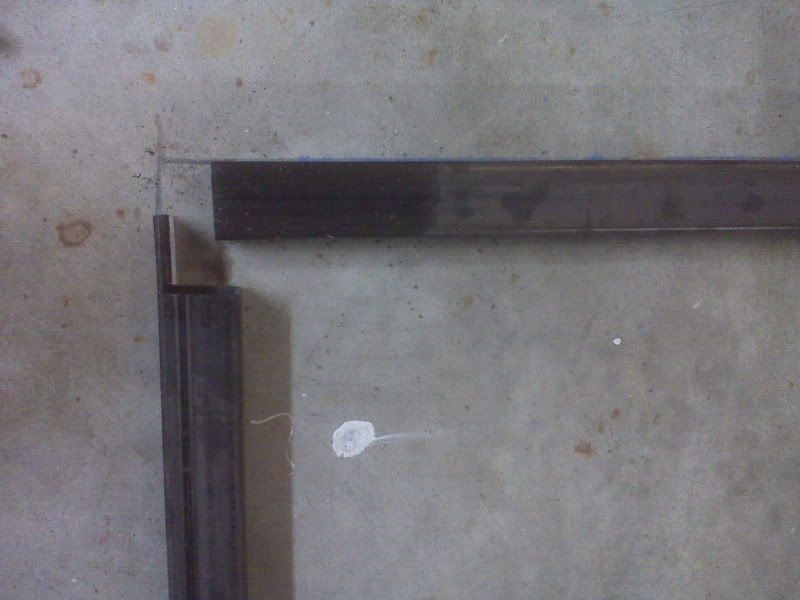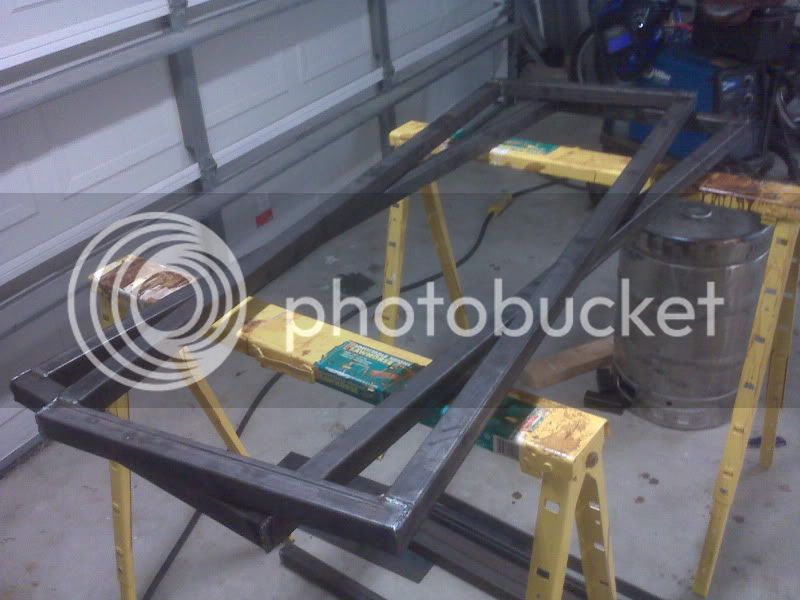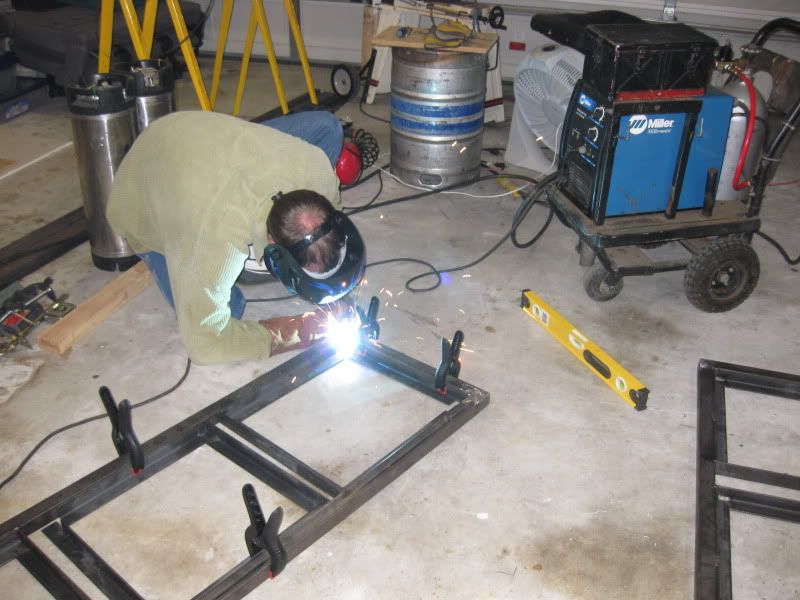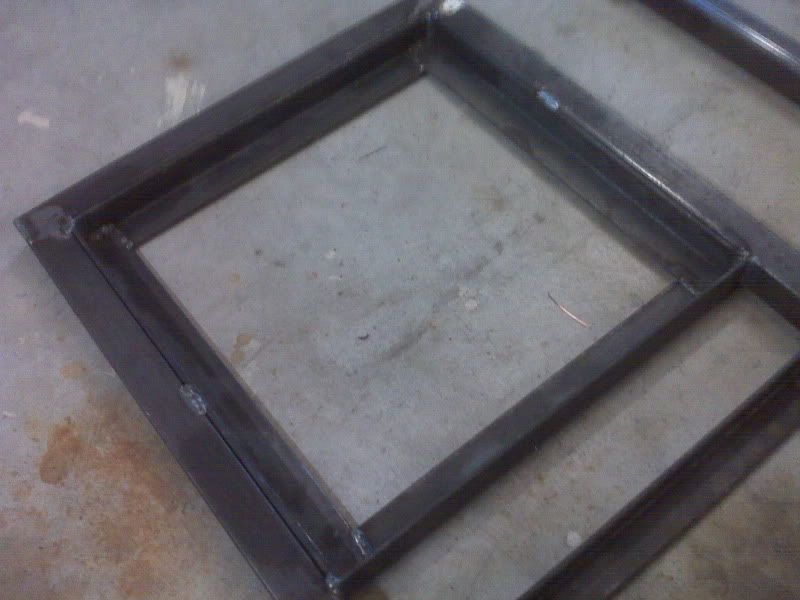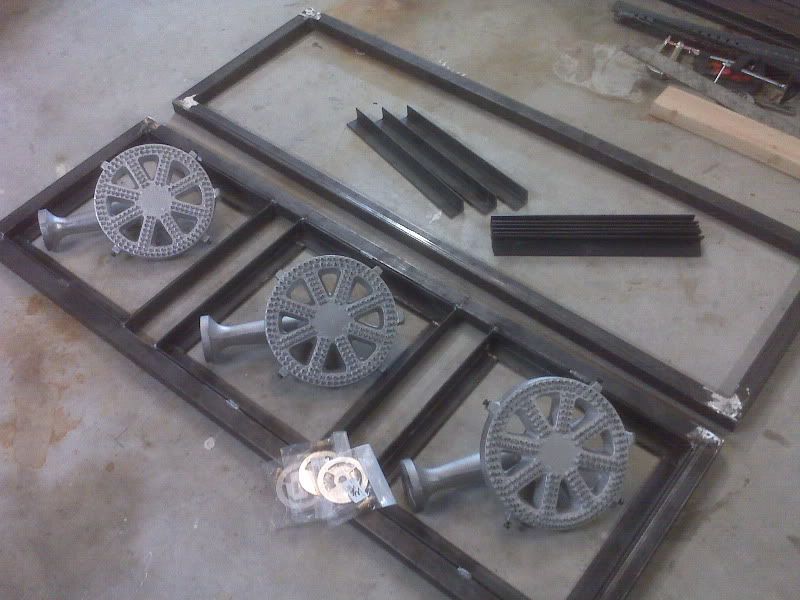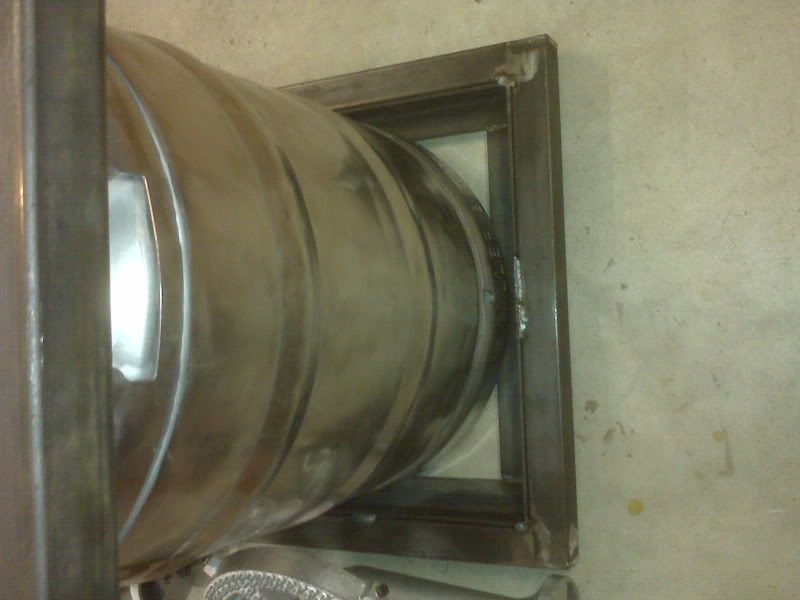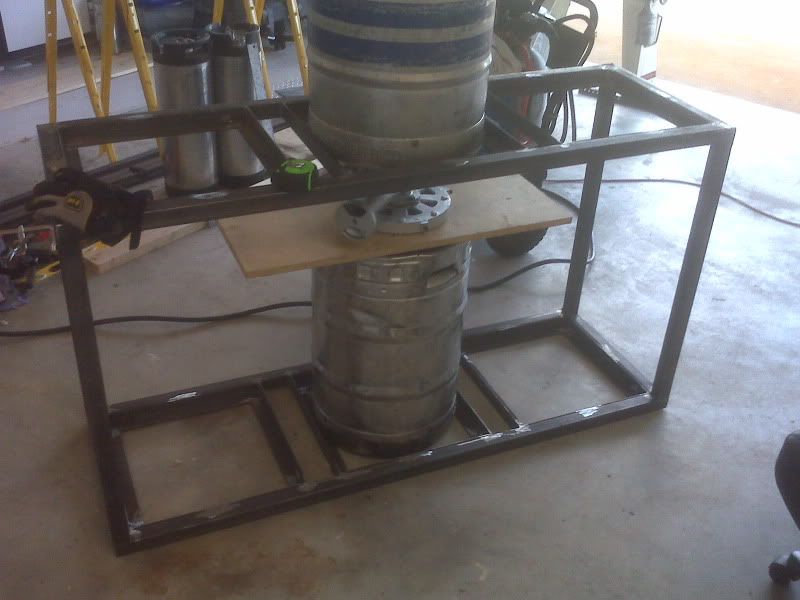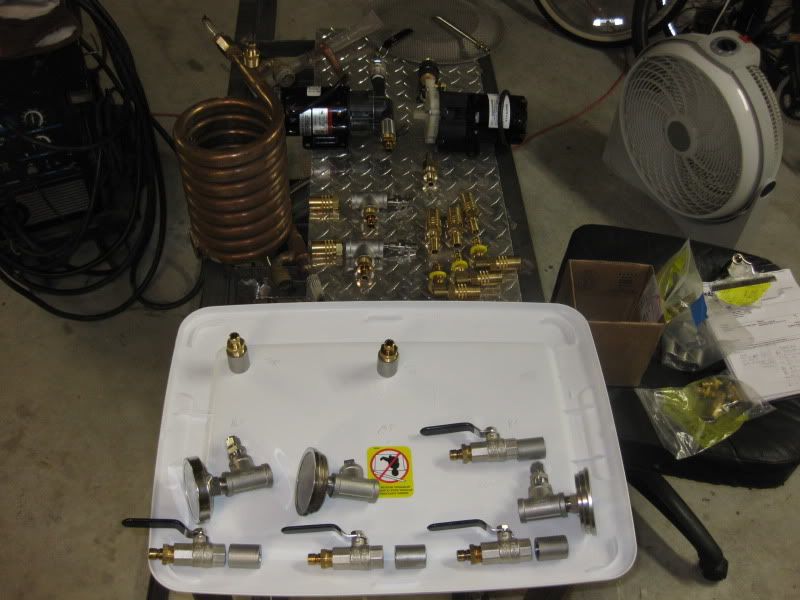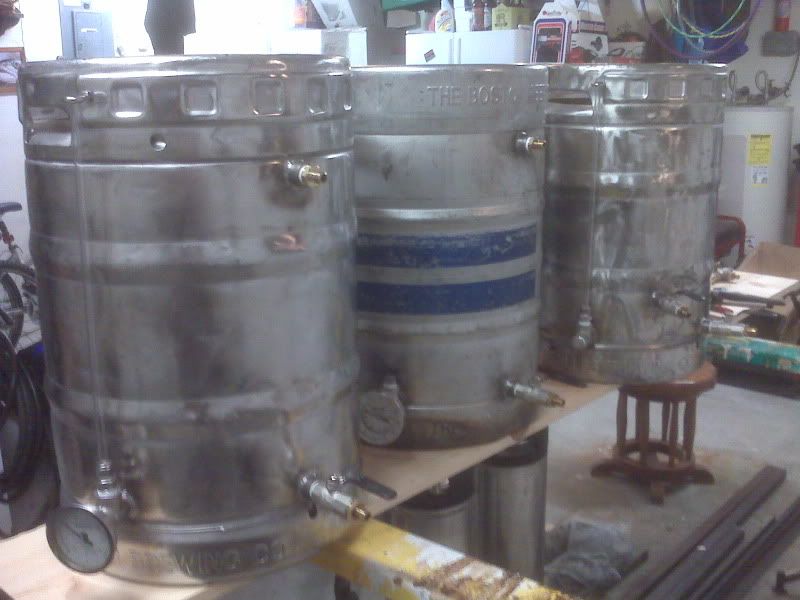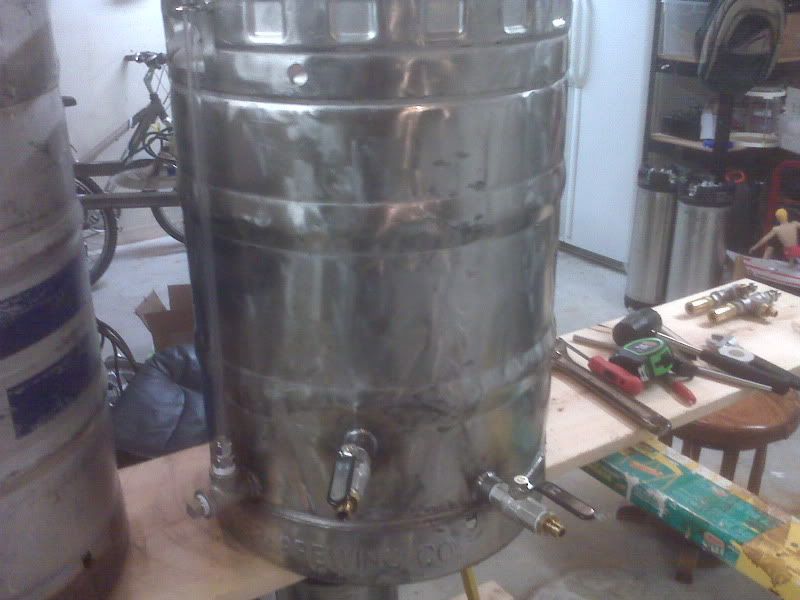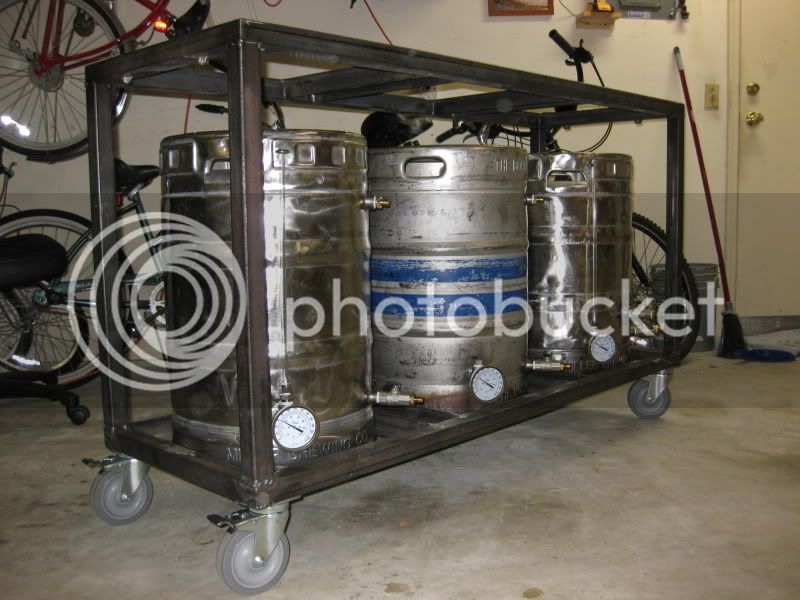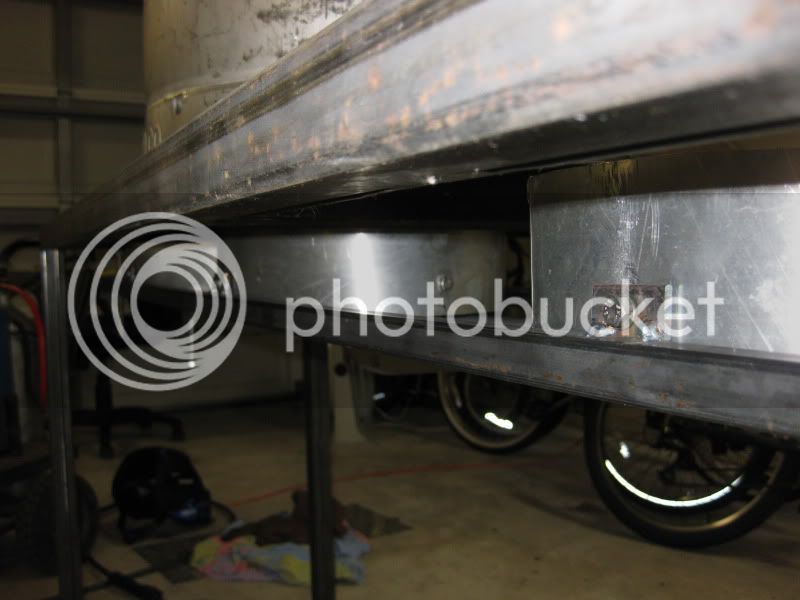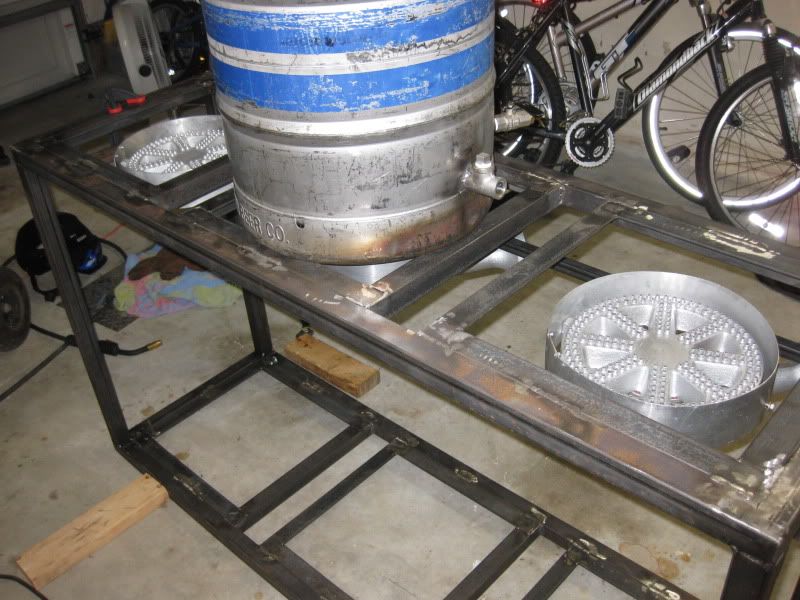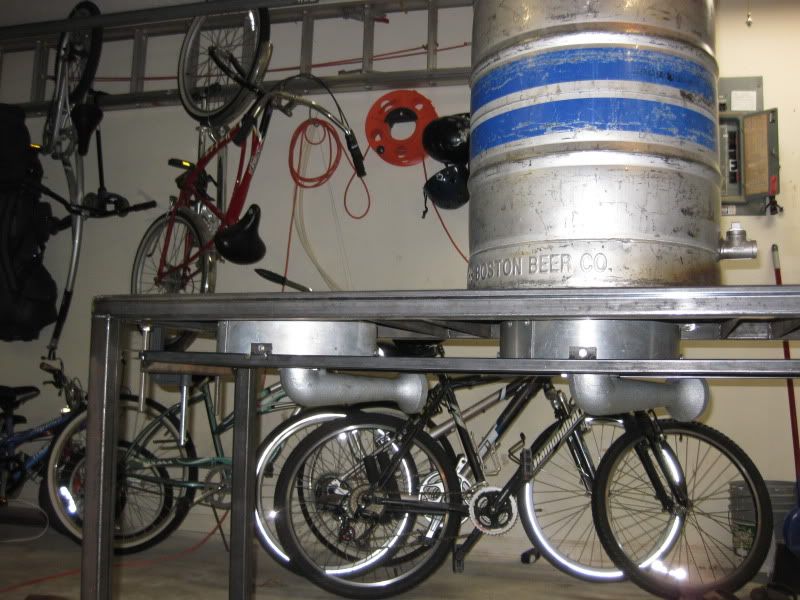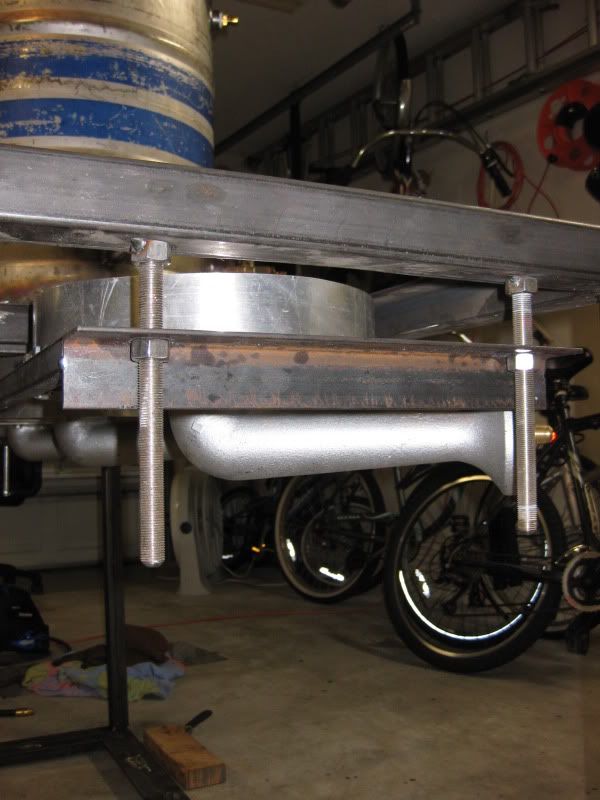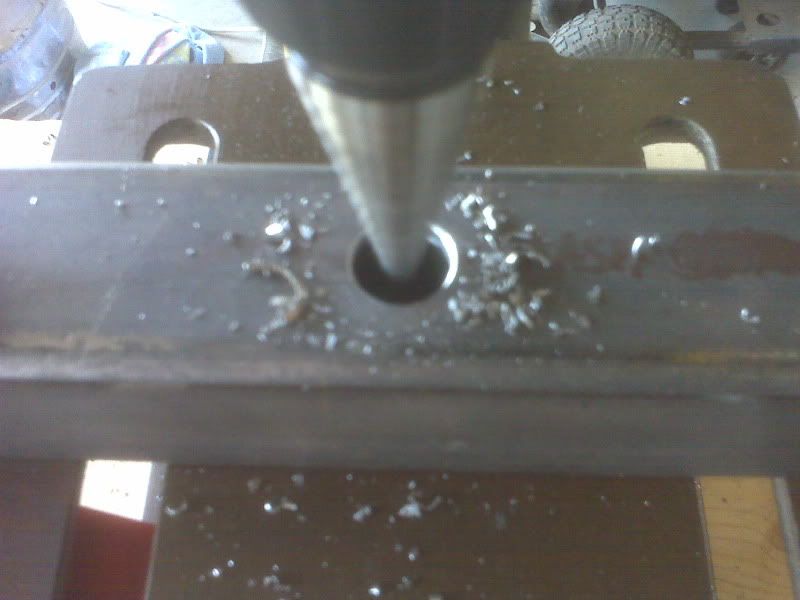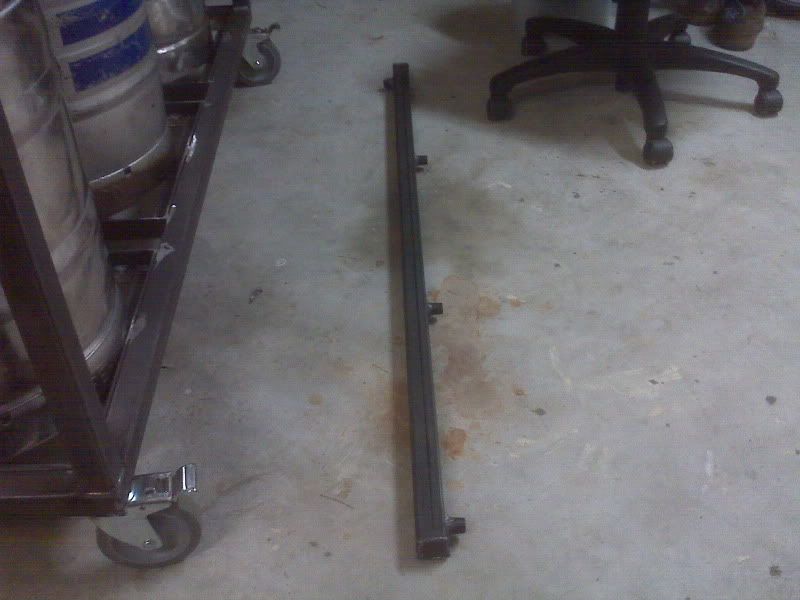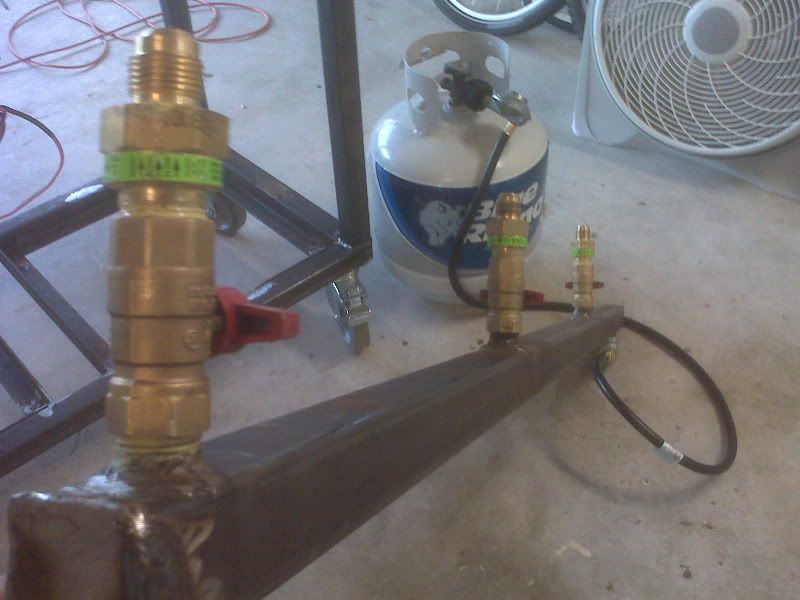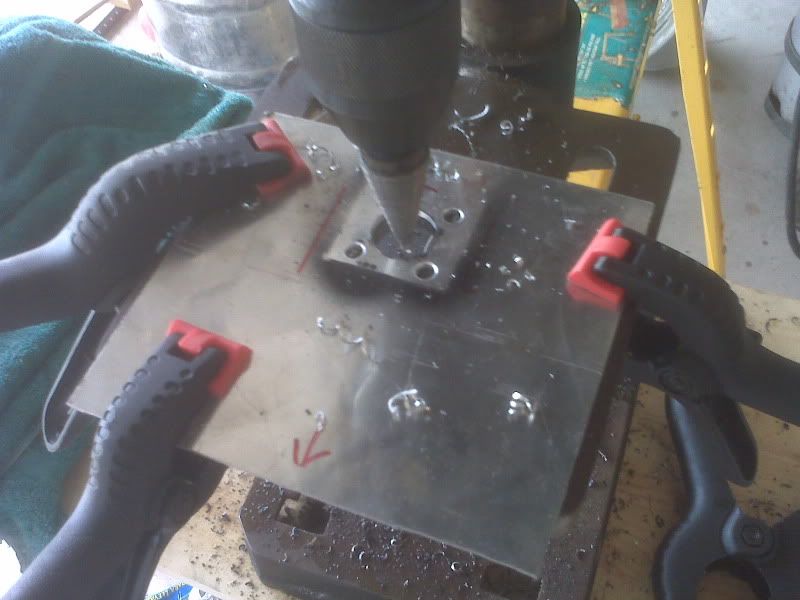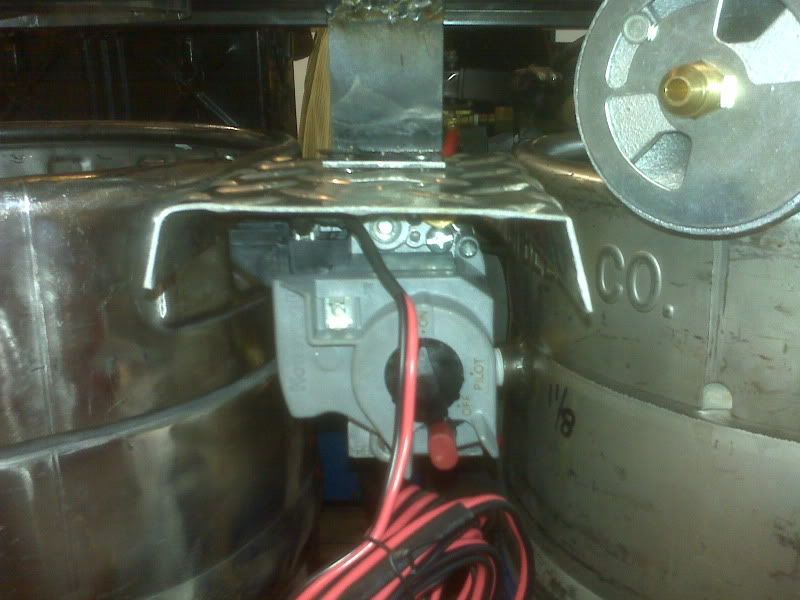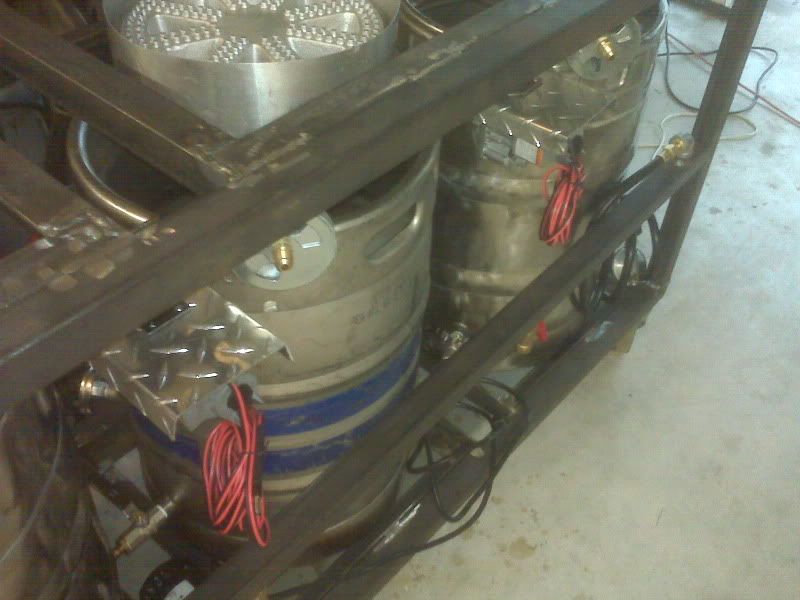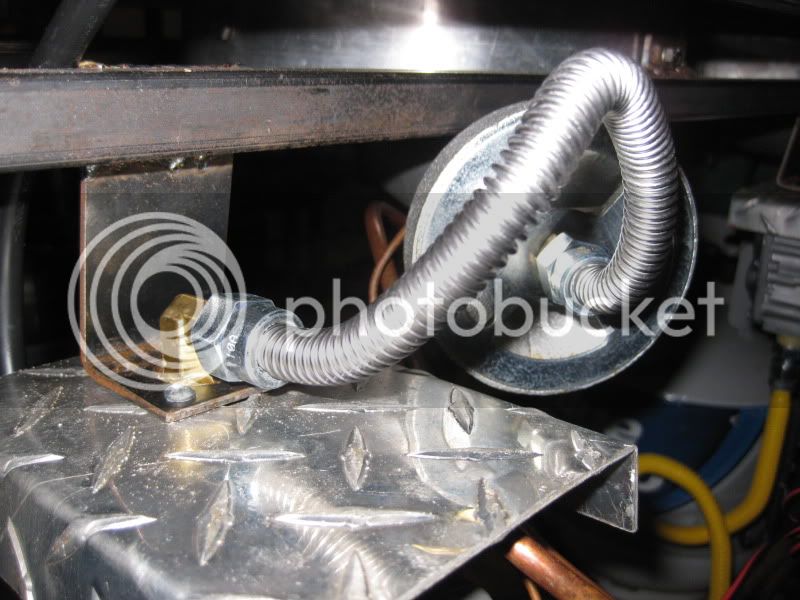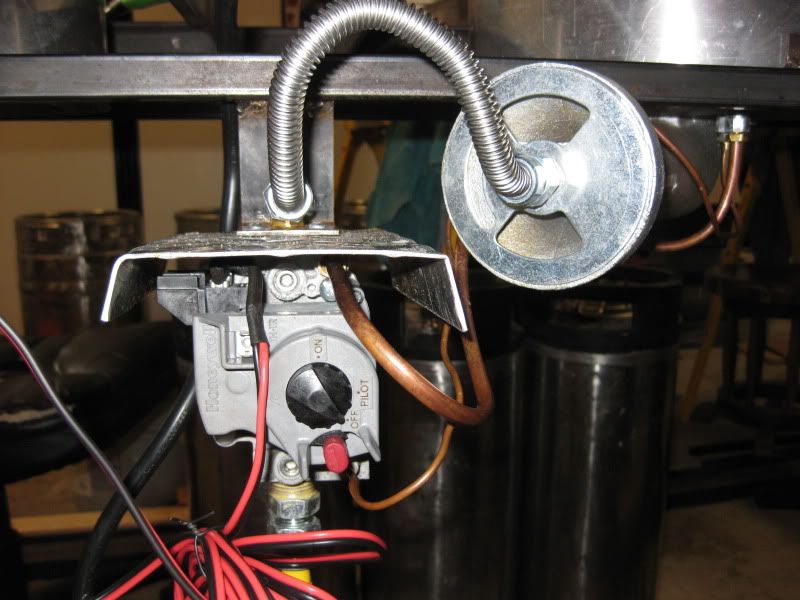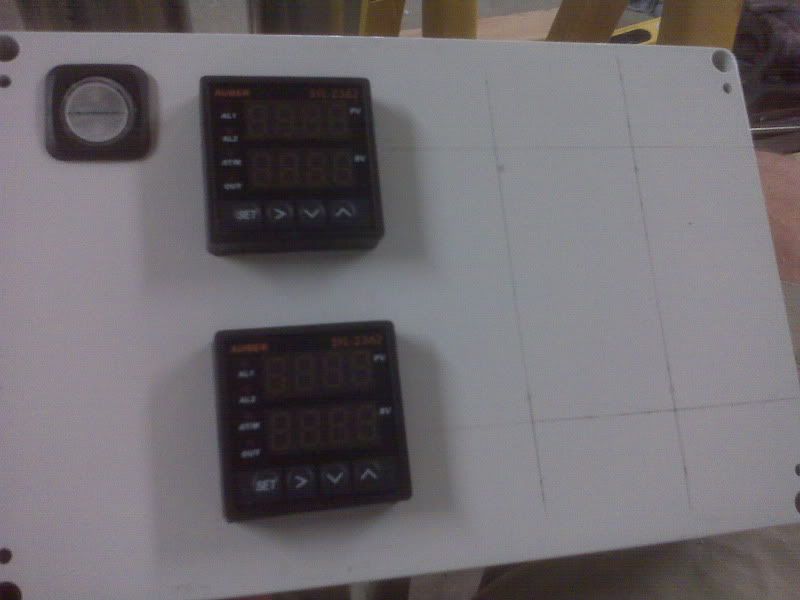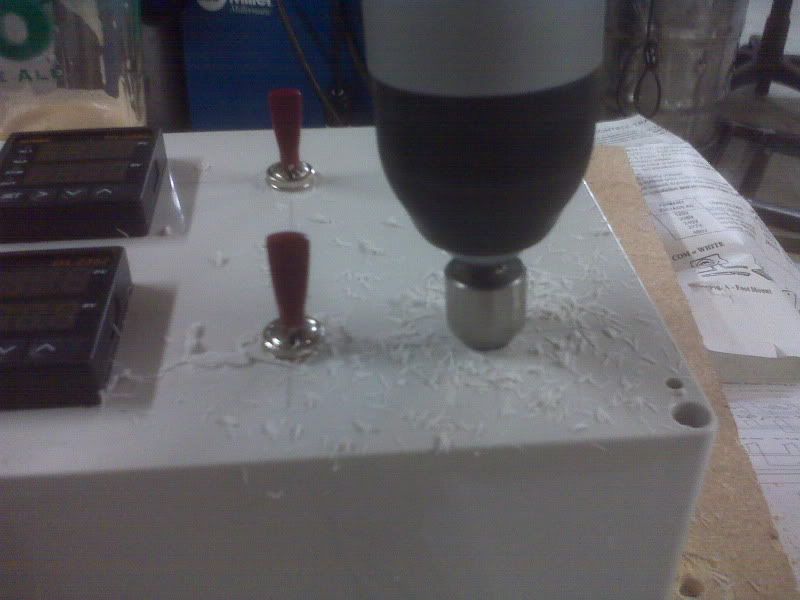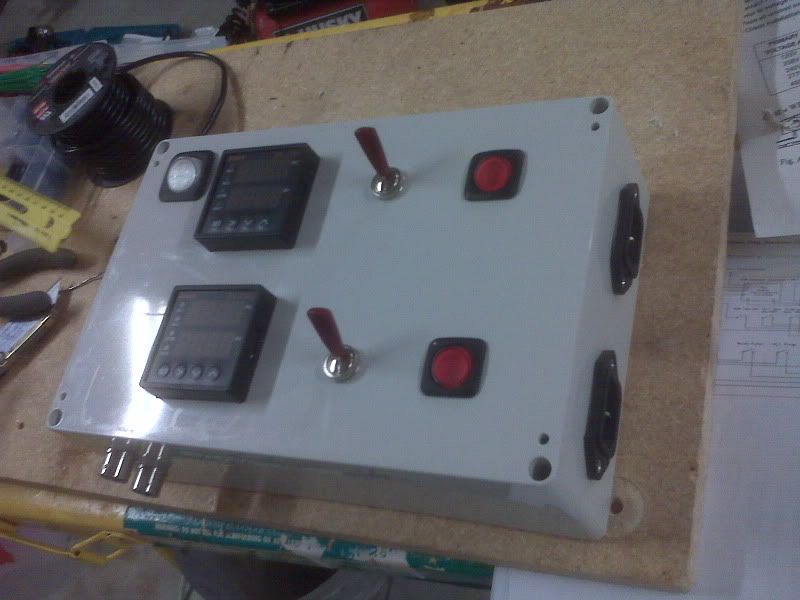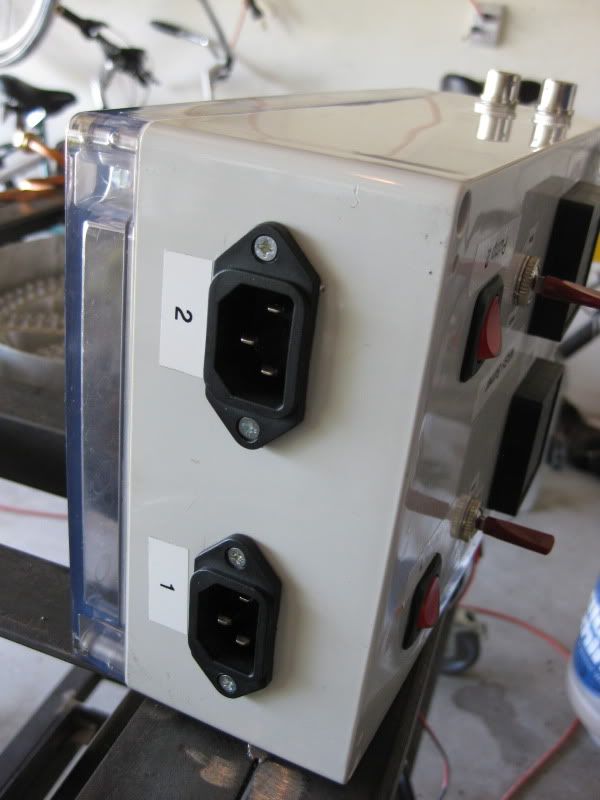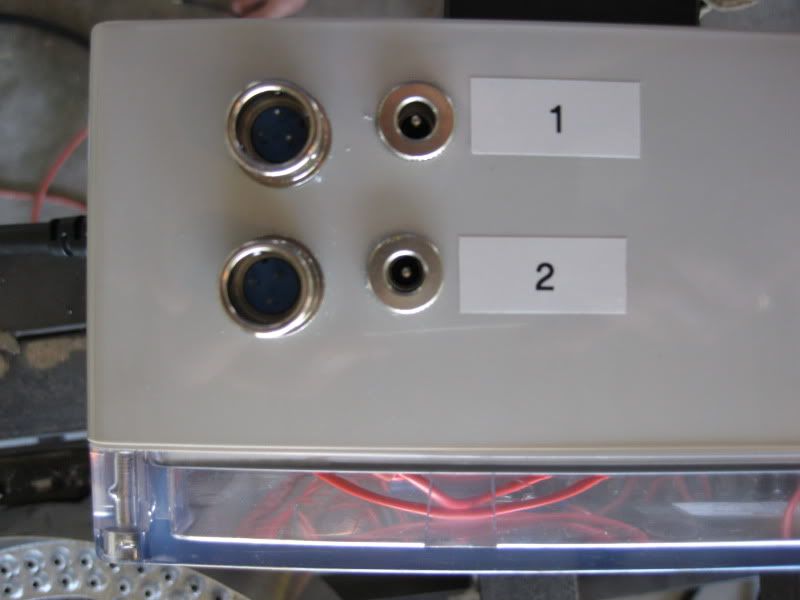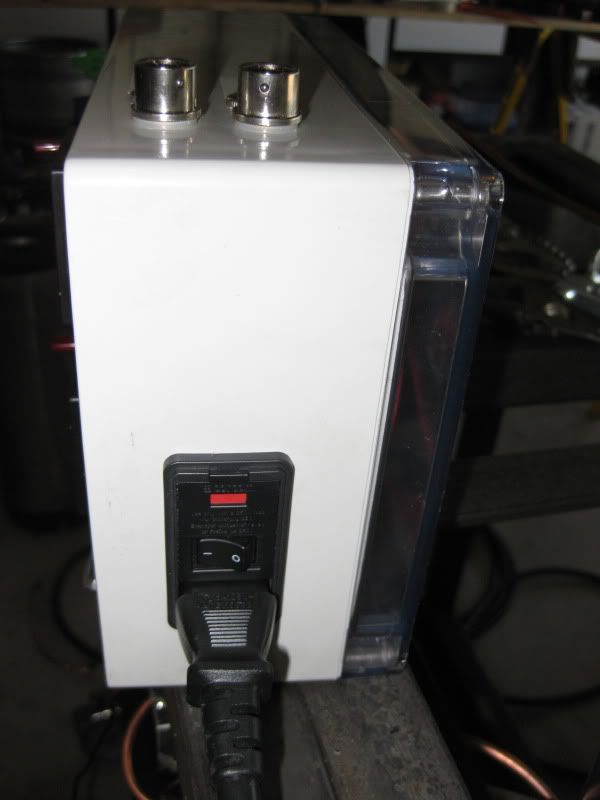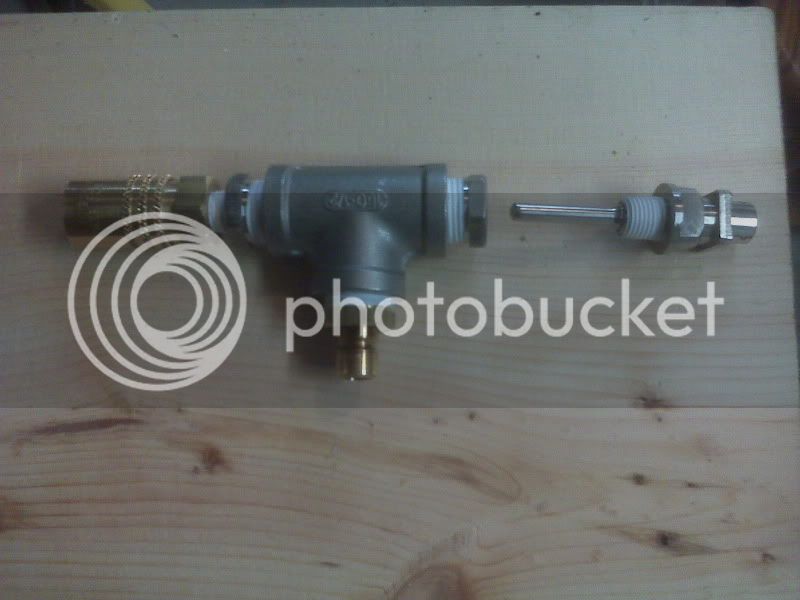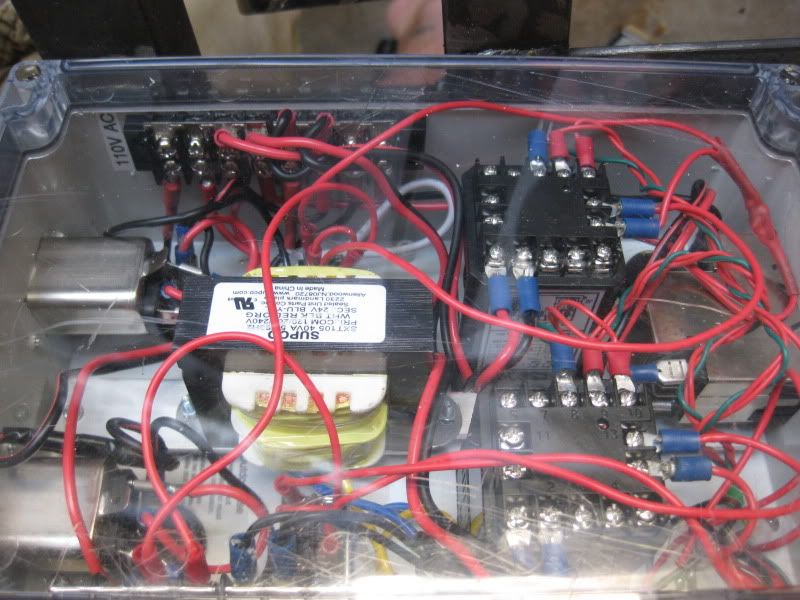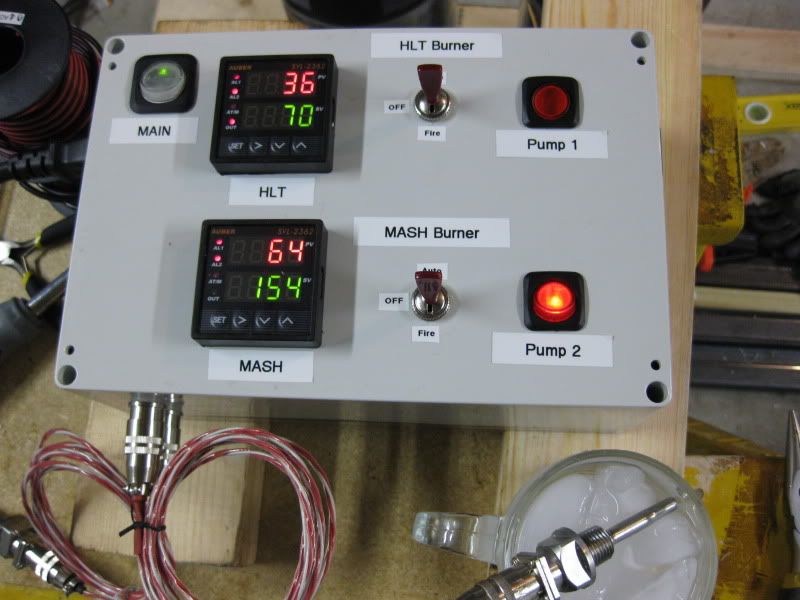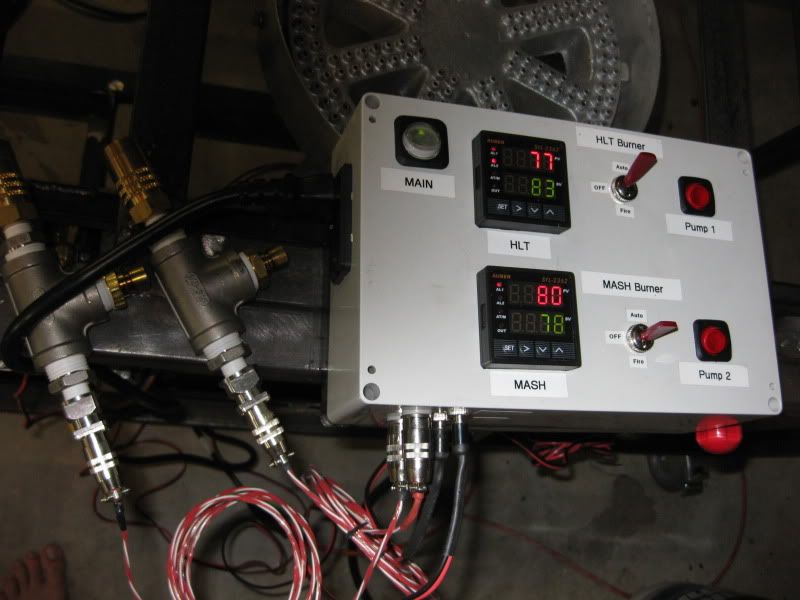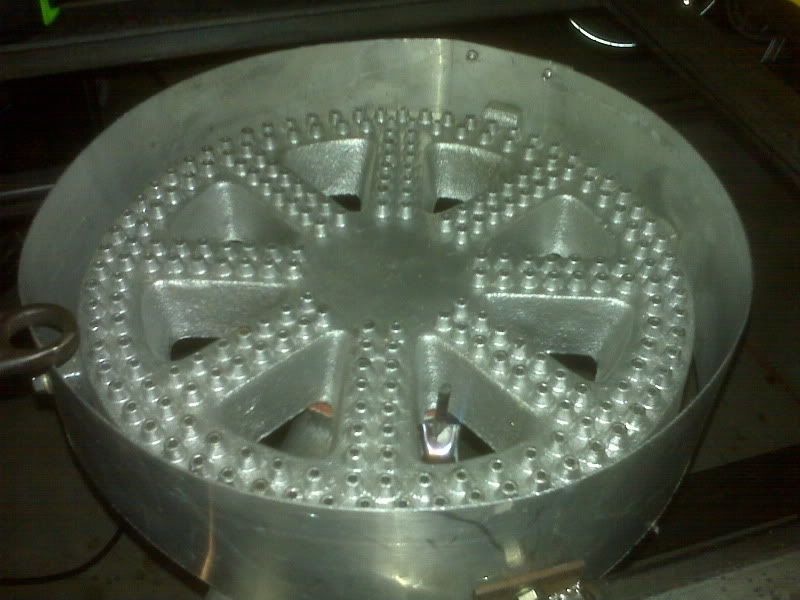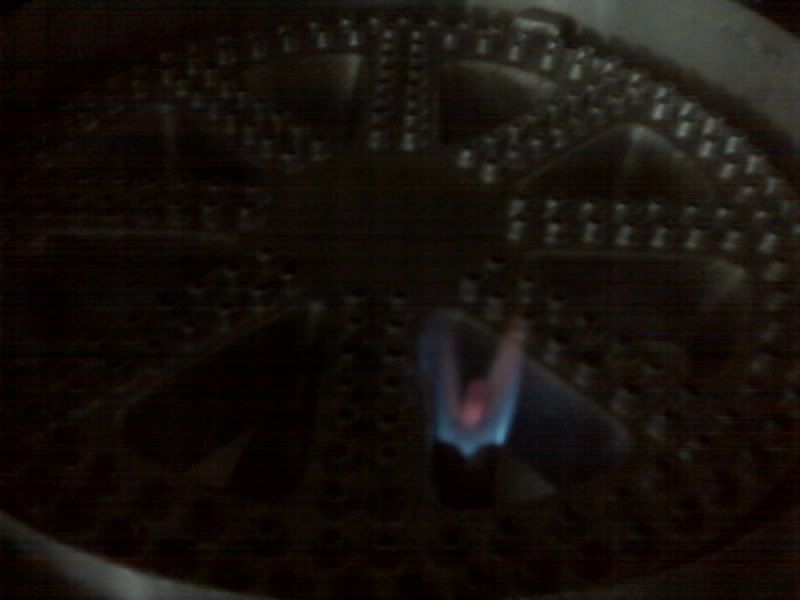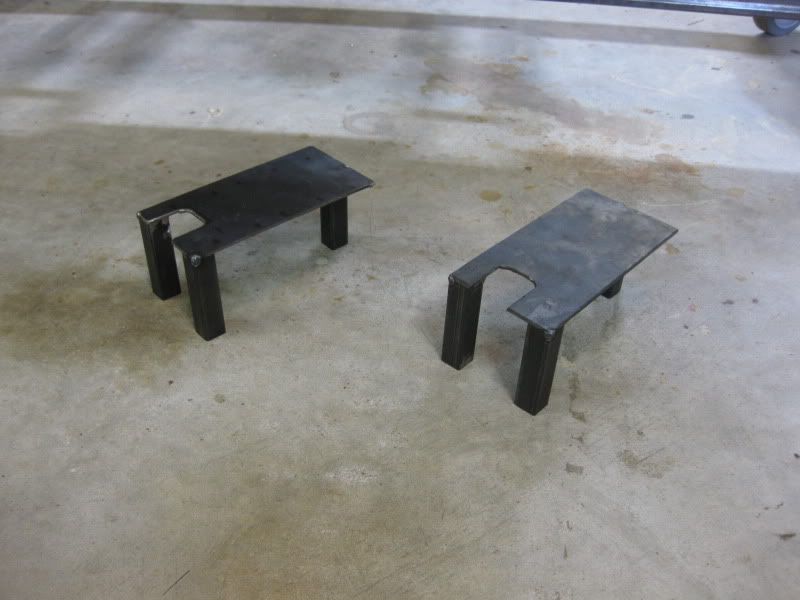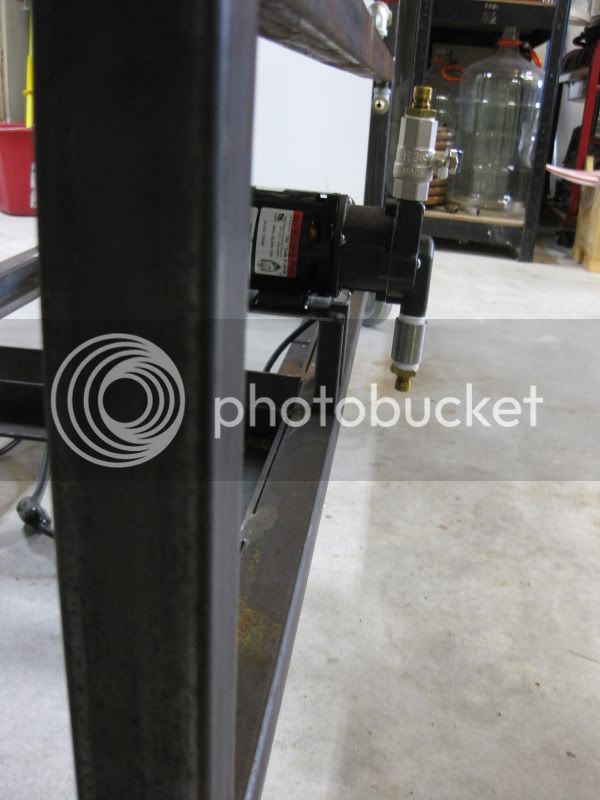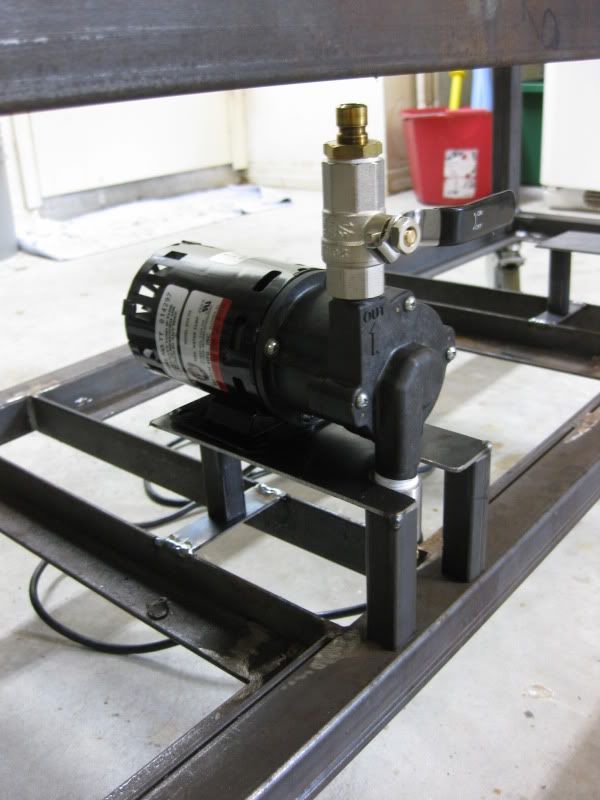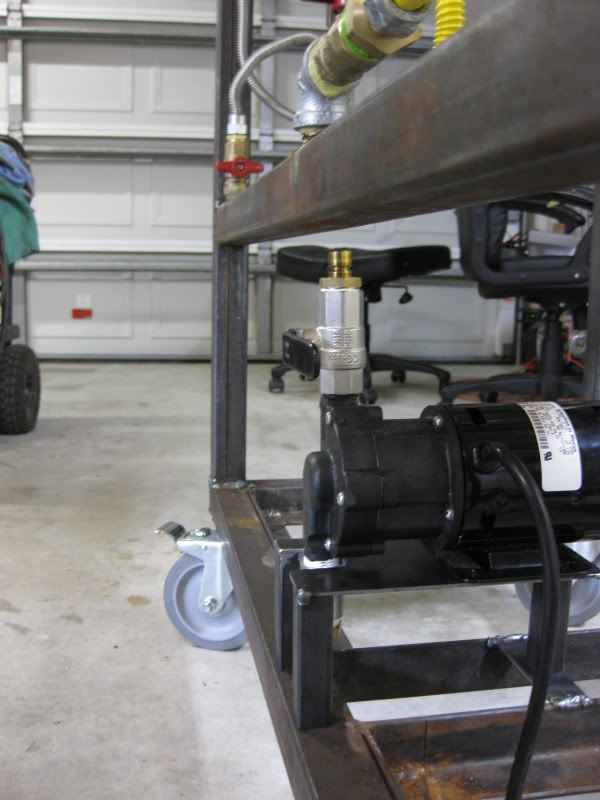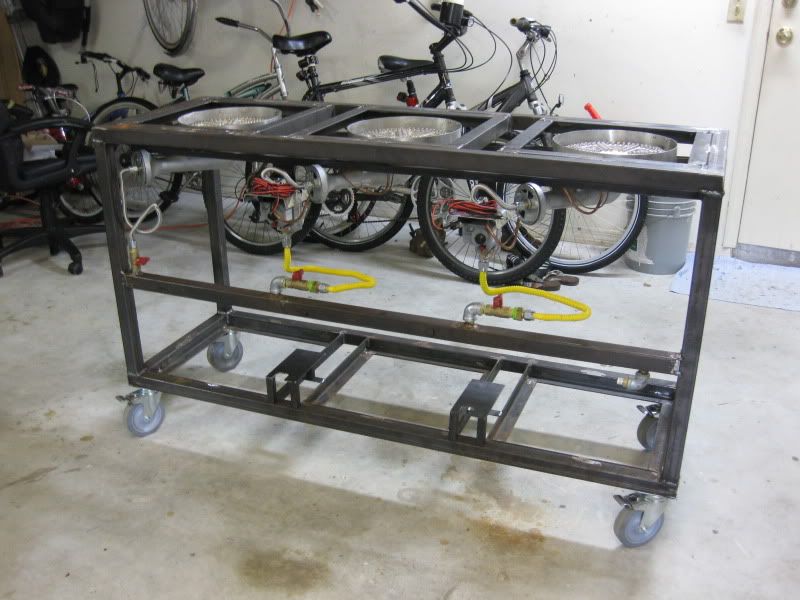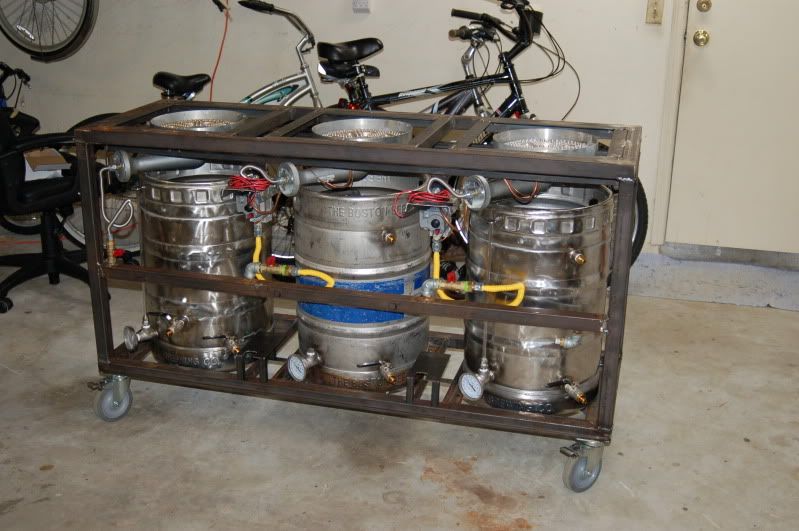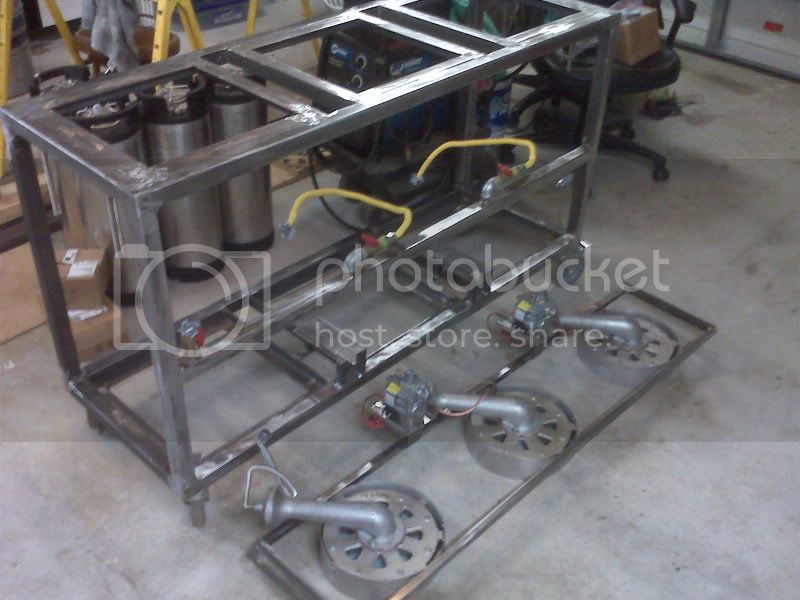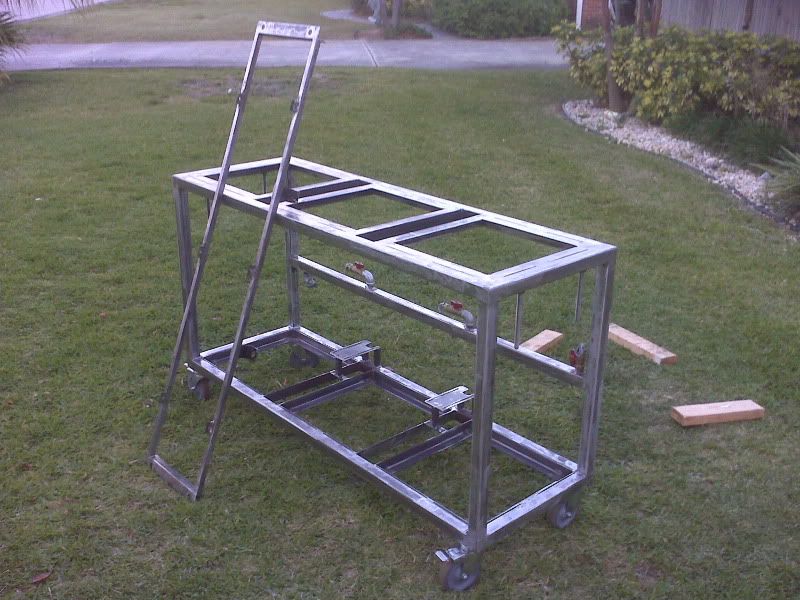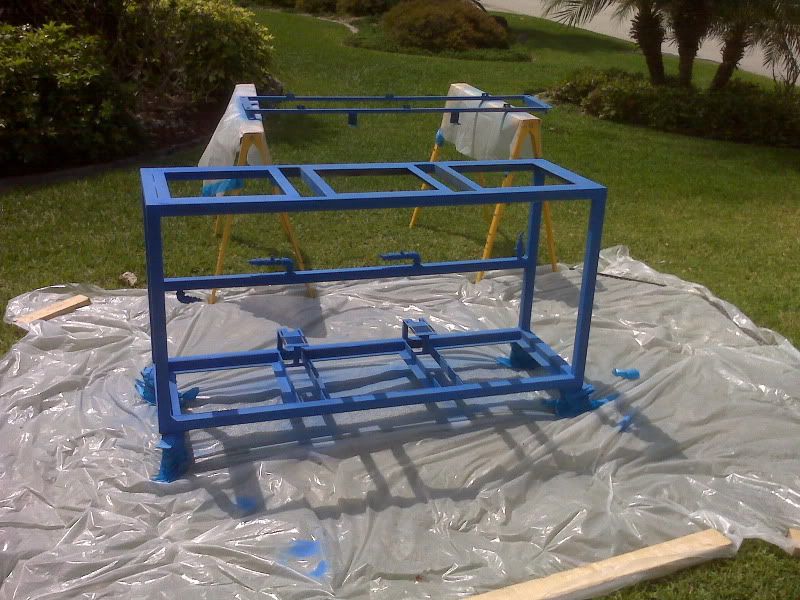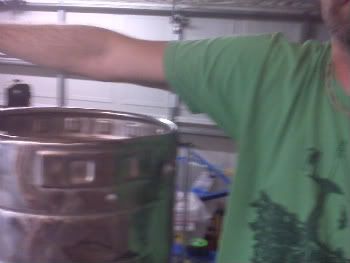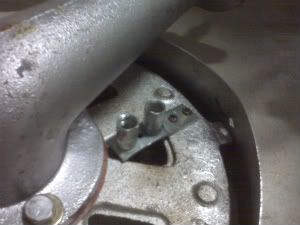jlandin
Well-Known Member
Edit:
This build is complete! The final cost and parts sheet is at post #80 HERE.
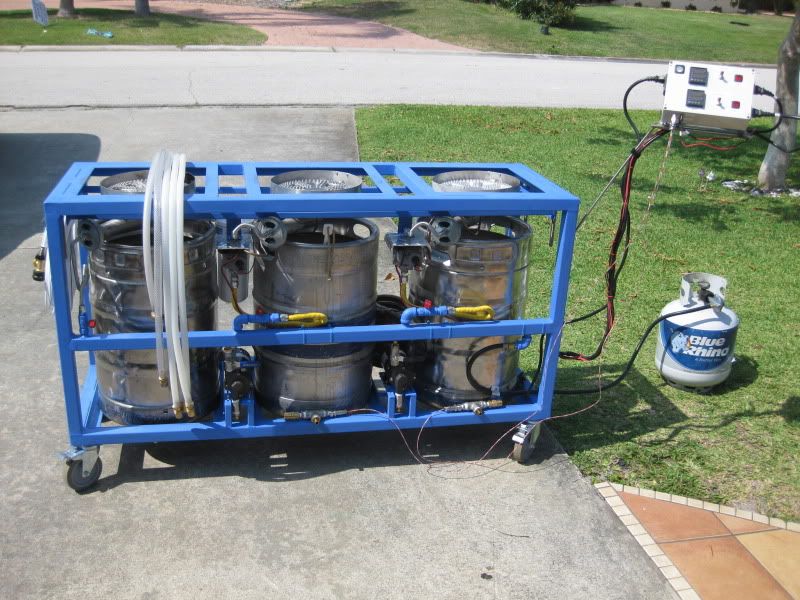
Original Post:
This DIY Projects forum is dangerous I tell you!! I had a perfectly good day-tap keg setup, and now I have an 8 keg 4 tap keezer. I had a perfectly good all-grain, single tier, single pump, keggle-on-cajun-cooker-based system, and now I'm building a brutus 10 like system! SWMBO thanks you!
Ok, here goes.. I'm going to try to document this build with as much detail as possible to help others who build a similar system. If I leave something out, and you want clarification or more pictures, let me know and I'll try to accommodate. When I finally finish the build, I will post a parts list with a tally of the cost as I've done before.
Initially I thought I'd make a brutus 20 for the footprint advantage, but I make several big beers and was a bit scared of the potential limitations of CRDFM. So I decided on the brutus 10 with a few modifications to the original.
Here are some of the key features I was looking for:
- Automated temp control for HLT and direct-fired MLT.
- Ability to store the keggles inside the stand when not in use.
- Nothing extending outside of the rectangular stand frame (plumbing, control arm, etc) when not in use.
- Thermocouple auto shutoffs for the pilot and burners (thermocouple).
- Three kick a** banjo burners (BG14).
- All low pressure propane.
- Adjustable height for all burners.
- Hand-off-auto style switches for burner controls.
- Detachable control panel so I can bring it in the house when not in use (don't want it to corrode here by the beach).
The storage is key, because I want to roll the system under my workbench in the garage when not in use. I've never seen anyone on here do this! I'm generally pretty handy but had never welded before. I didn't even own a welder until this project, but I had been looking for a good excuse to get one. I picked up a good deal on a 230V Miller 175 MIG welder on craigslist and I have really enjoyed that machine!
Next up I'll post a timeline of pictures for the progress thus far.
--
Josh
This build is complete! The final cost and parts sheet is at post #80 HERE.

Original Post:
This DIY Projects forum is dangerous I tell you!! I had a perfectly good day-tap keg setup, and now I have an 8 keg 4 tap keezer. I had a perfectly good all-grain, single tier, single pump, keggle-on-cajun-cooker-based system, and now I'm building a brutus 10 like system! SWMBO thanks you!
Ok, here goes.. I'm going to try to document this build with as much detail as possible to help others who build a similar system. If I leave something out, and you want clarification or more pictures, let me know and I'll try to accommodate. When I finally finish the build, I will post a parts list with a tally of the cost as I've done before.
Initially I thought I'd make a brutus 20 for the footprint advantage, but I make several big beers and was a bit scared of the potential limitations of CRDFM. So I decided on the brutus 10 with a few modifications to the original.
Here are some of the key features I was looking for:
- Automated temp control for HLT and direct-fired MLT.
- Ability to store the keggles inside the stand when not in use.
- Nothing extending outside of the rectangular stand frame (plumbing, control arm, etc) when not in use.
- Thermocouple auto shutoffs for the pilot and burners (thermocouple).
- Three kick a** banjo burners (BG14).
- All low pressure propane.
- Adjustable height for all burners.
- Hand-off-auto style switches for burner controls.
- Detachable control panel so I can bring it in the house when not in use (don't want it to corrode here by the beach).
The storage is key, because I want to roll the system under my workbench in the garage when not in use. I've never seen anyone on here do this! I'm generally pretty handy but had never welded before. I didn't even own a welder until this project, but I had been looking for a good excuse to get one. I picked up a good deal on a 230V Miller 175 MIG welder on craigslist and I have really enjoyed that machine!
Next up I'll post a timeline of pictures for the progress thus far.
--
Josh


